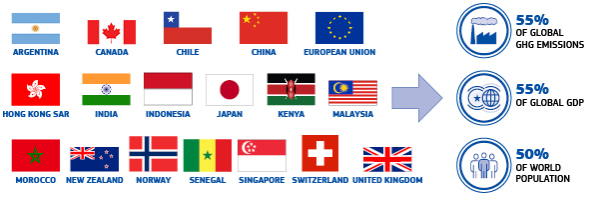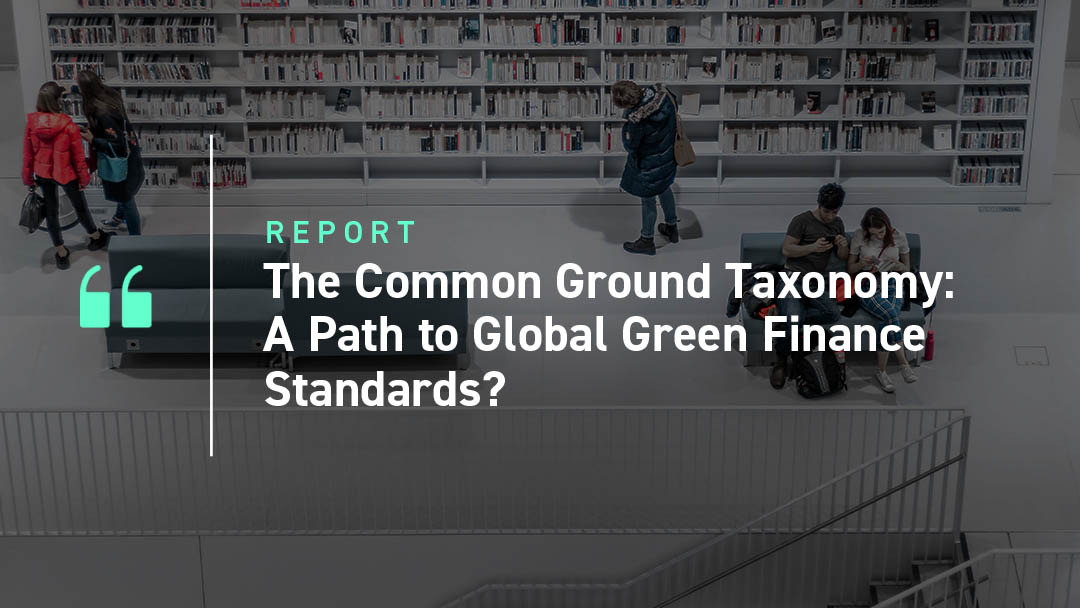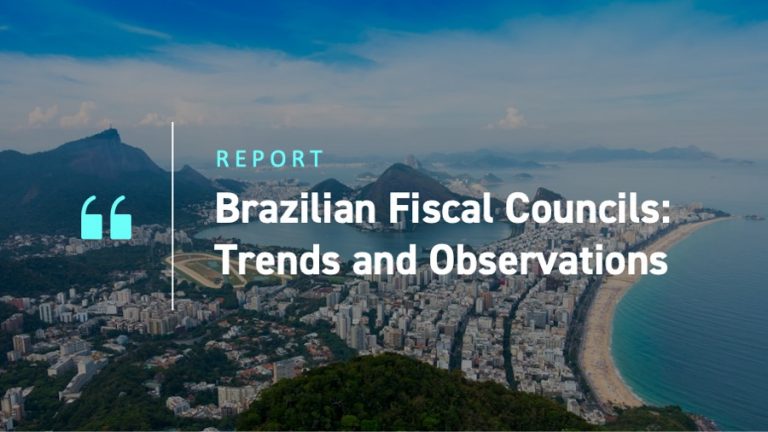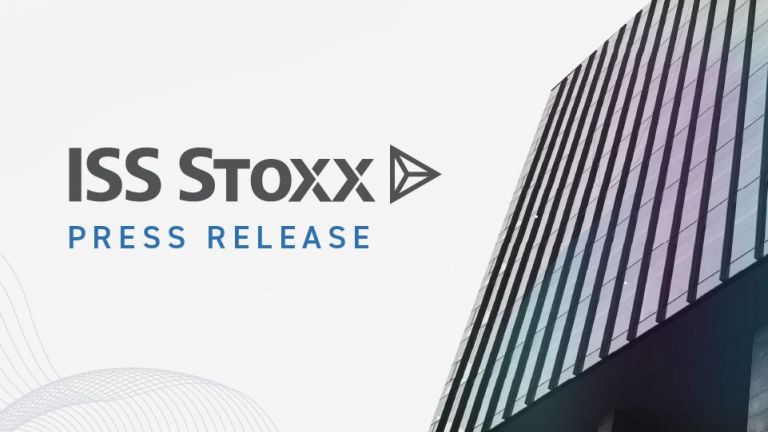The first progress report and draft list of activities for the development of the Common Ground Taxonomy (CGT) were hailed, when they were published in November 2021, as milestones in fostering better international comparability and interoperability of taxonomies. The CGT aims to lower transaction costs and facilitate smoother cross-border green capital flows by avoiding unnecessary duplication of verifications, increasing market confidence, and reducing market segmentation.
Launched through the International Platform on Sustainable Finance, the CGT comes at a critical moment. Countries around the world are developing their own taxonomies, which raises concerns about fragmentation and confusion. Since the CGT is co-developed by two global leaders of green finance, the EU and China (the People’s Bank of China [PBoC], China’s central bank, and the EU Commission co-chaired the working group establishing CGT), experts hope it can also be used by other countries to develop their own standards, hence fostering taxonomy unification.
The CGT draws on the EU Taxonomy and the “Green Bond Endorsed Projects Catalogue,” which governs China’s green bonds market. The latest edition of China’s Green Bond Catalogue, which came into effect in July 2021, was already adjusted to increasingly align with international taxonomies. Significantly, the Catalogue excludes coal projects from the list of eligible projects. This issue was previously a major point of difference between China and international standards.
The CGT is an ongoing endeavor which builds upon many years of combined expertise from Chinese and European taxonomy experts. In its current state, it analyses 80 economic activities across six industrial sectors, with a focus on climate change mitigation.
The sectors covered by the Common Ground Taxonomy are:
- Agriculture, forestry, and fishing
- Manufacturing
- Electricity, gas, steam, and air conditioning supply
- Water supply; sewage, waste management, and remediation activities
- Construction
- Transportation and storage
To determine the eligibility criteria for each activity, the CGT either adopts criteria present in both sets of taxonomies (China’s taxonomy being the China Green Bond Endorsed Projects Catalogue) or adopts whichever taxonomy criteria is more stringent. Consequently, activities assessed to be aligned with CGT criteria are also by definition aligned with both EU and Chinese taxonomies.
After the November 2021 publication of the draft proposal, a consultation process was carried out to collect industry feedback. Industry experts are therefore expecting the final version to be announced for adoption in the foreseeable future.
What is its Significance?
Facilitating sustainable investments across borders is one of the central features of the CGT. By providing clarity and transparency on the commonalities and differences between Chinese and European requirements, the CGT can provide international investors with a clearer understanding of which activities can be considered sustainable. The main advantage of this approach is that investors in bonds from both markets can more easily compare the projects financed by these bonds, and better understand the environmental impacts of the bonds in both markets.
Without the CGT, investors from both Europe and China would be wary of investing in green finance products from the other jurisdiction. CGT therefore reduces segregation between the markets and brings investors and issuers closer together. As such, it is expected to be popular with issuers in both jurisdictions that hope to attract investors from the other jurisdiction.
We can already see challenges to the use of locality-specific taxonomies outside their home market. For instance, a recent report by the International Capital Market Association (ICMA) identified significant challenges for international investors in following the EU Taxonomy. These challenges lie in technical screening criteria (TSC) requirements that refer to EU-specific norms and standards.
A commonly cited hurdle is the TSC for green buildings, which rely heavily on the use of Energy Performance Certificates (EPC), or the definition of a nearly zero-emission building (NZEB), each of which is used only in Europe. This is a common issue due to the high proportion of real estate-related green financial instruments in the market. However, as the standards used are not universally applicable, investors and corporates struggle to find alternative benchmarks for real estate located outside the EU. By providing overarching guidelines that do not rely on region-specific norms and standards, the CGT can provide investors with globally applicable criteria and thus facilitate capital allocation towards sustainable activities.
This last point also refers to a second crucial feature of the CGT: it may serve as a model for other sustainability classification systems. As the worldwide use of taxonomies rapidly expands, the CGT could provide clear standards for sustainable activities that are applicable across different jurisdictions. Investors, companies, and lawmakers around the world can rely on these standards when making investment decisions or drafting legislative proposals. As a result, the CGT could contribute to greater harmonization among different international taxonomies and ultimately to a common global understanding of sustainability.
Future Directions
CGT may meet a significant market need, given the fundamental and practical differences among regions and jurisdictions. Some of the International Platform on Sustainable Finance (IPSF) members have developed or are currently developing their own green taxonomy, such as the European Union, China, Malaysia, Singapore, Indonesia (member of the ASEAN), and the United Kingdom. Many of these IPSF members are actively contributing to the development of CGT.

Source: IPSF
Hong Kong is one of Asia’s green and sustainable finance hubs and the most popular exchange for green products in APAC. In December 2020, Hong Kong’s financial regulators and the government of Hong Kong Special Administrative Region jointly created a Cross-Agency Steering Group to coordinate the Hong Kong market’s green and sustainable finance strategy. Hong Kong’s government aims to underscore the region’s position as the “gateway between China and the rest of the world” and encourage more investors from the Chinese mainland to issue offshore green bonds as well as accelerate low-carbon construction. Such an initiative also highlights the critical importance of CGT.
The Common Ground Taxonomy is a groundbreaking step for green and sustainable finance and can help accelerate the global transition towards a low-carbon economy. Further improvement is possible, however. In particular, CGT covers substantial contribution criteria for only climate change mitigation, while other environmental objectives and eligibility features such as Do No Significant Harm are not covered at this stage. The CGT is therefore likely to become more stringent and comprehensive.
Why is ISS ESG Uniquely Positioned in This Market Segment?
ISS ESG expects the increasing usage of CGT to have a noticeable impact on the Second Party Opinion (SPO) market, as issuers explore including CGT alignment assessments in their SPOs. Issuers may then draw on the ISS ESG team’s solid expertise on EU Taxonomy alignment assessment. The ISS ESG SPO team has accumulated significant expertise in recent years performing such EU Taxonomy alignment assessments for clients. In fact, about 17% of the Green Use of Proceeds Bond issuances the ISS ESG team has assessed since June 2020 have included the EU Taxonomy criteria in the selection of categories. We aim to contribute this expertise to our work on CGT alignment assessment.
Strategically positioned in the market with a global and multicultural team supporting bond issuers across regions (EMEA, APAC, North America), the ISS ESG SPO team’s expertise in taxonomies will be essential in serving the ever-evolving green finance environment as it becomes more transparent and structured.
Explore ISS ESG solutions mentioned in this report:
- Use ISS ESG’s Second Party Opinion (SPO) Services to provide sustainability, green and social bonds with a credible and independent assessment of their sustainability quality.
By Cecily Liu, ESG Consultant, ISS ESG. Rafael Heim, ESG Consultant, ISS ESG. Adams Wong, Associate Vice President, Climate Change – Investor Consulting, ISS ESG.




